







Source: http://www.visafric.com
| Eritrea welcomes you | |
| Eritrea A Unique Tourist Experience | |
| Cruising through the Dahlaks | |
| Contrasts in harmony | |
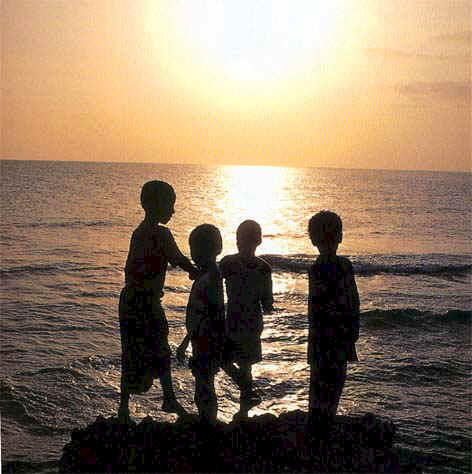
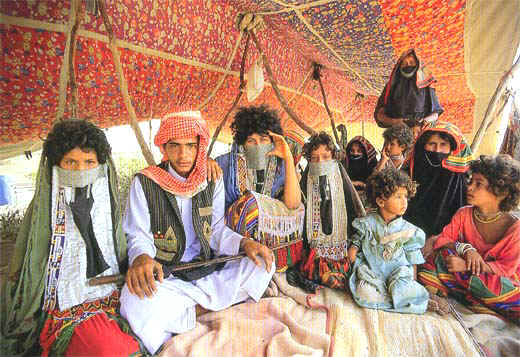 Most
of all there are people of Eritrea – as sunny and as welcoming as their
country itself, a modern nation in an ancient land. On 24 May 1991, Eritrea
became independent country after 100 years of successive colonial rule, and
declared formal independence from Ethiopia following a referendum in 1993.
Most
of all there are people of Eritrea – as sunny and as welcoming as their
country itself, a modern nation in an ancient land. On 24 May 1991, Eritrea
became independent country after 100 years of successive colonial rule, and
declared formal independence from Ethiopia following a referendum in 1993.
Eritrea has a population of some four million made up of nine ethnic groups each with its own language.
 The population is evenly divided between Muslim and Christian. Eighty percent of
the people live in the countryside; of these about 30 percent are nomadic
pastolalists, the rest are agropastoralists.
The population is evenly divided between Muslim and Christian. Eighty percent of
the people live in the countryside; of these about 30 percent are nomadic
pastolalists, the rest are agropastoralists.
Topographically and climatically, Eritrea is divided into three major zones: the central highlands, the eastern coastal region and the western lowlands. All are within reach of Asmara, the capital, and together comprise spectacular mountains, arid semi-desert, fertile plains and sandy beaches.
You can venture into the legacy of the Eritrea’s historic monasteries and ancient sites, monuments that remind us of a glorious past that goes back over more than three millennia.
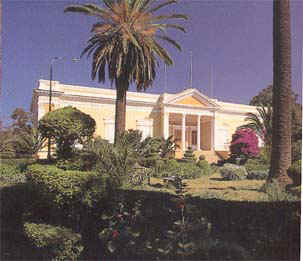 And
at the same time you can enjoy contemporary life in the flower decked garden
cities of the capital, Asmara, and the Mediterranean ambiance of the coastal
capital Massawa.
And
at the same time you can enjoy contemporary life in the flower decked garden
cities of the capital, Asmara, and the Mediterranean ambiance of the coastal
capital Massawa.
In both cities, boulevard cafes, bistros, elegant and historic buildings, and lively bustling souks reveal a cosmopolitan lifestyle and evoke a sunny, Mediterranean character.
The nine ethnic groups united as one people offer visitors a hospitality that has to be experienced to be believed and the chance to discover a new dimension in exciting cultural experiences, a glimpse of a different Africa.
Because of its varied geography, each region provides dramatic evidence of the spectacular but often arid and rugged landscapes for which Eritrea is famous.
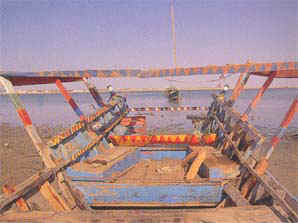 With
its long coastline of 1,216 kilometers, Eritrea is a child of the Red Sea. In
days gone by, trading links with Arabia and India prospered, and fishermen
brought their catches home to market. Now, over 354 Dahlak Islands, many only
inhabited by flocks of seabirds, form one of the great attractions of visitors
to the Red Sea coast.
With
its long coastline of 1,216 kilometers, Eritrea is a child of the Red Sea. In
days gone by, trading links with Arabia and India prospered, and fishermen
brought their catches home to market. Now, over 354 Dahlak Islands, many only
inhabited by flocks of seabirds, form one of the great attractions of visitors
to the Red Sea coast.
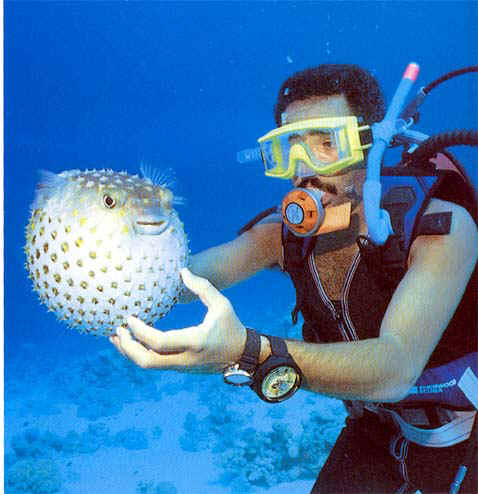 The
translucent waters around the islands lure experienced divers from all over the
world. Living color of coral, shoals of brightly colored fish, and an occasional
mysterious shipwreck create an unsurpassed underwater wonderland.
The
translucent waters around the islands lure experienced divers from all over the
world. Living color of coral, shoals of brightly colored fish, and an occasional
mysterious shipwreck create an unsurpassed underwater wonderland.
Today, the newest adventure in Africa is to discover Eritrea and the welcome that comes from the heart. Now is the time to discover this land that is as ancient as time itself, but a land that is only now attaining its destiny.
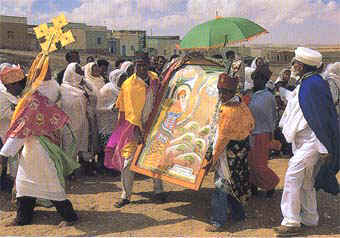 Whether
you trek the desert by camel, as Eritreans have done through the ages, or
explore the mountains with a 4WD vehicle; whether you come to dive the water of
the Red Sea, to discover fabled hot springs, go game watching in remote, faraway
plains, or just to enjoy one changing vista of beautiful landscape and handsome
smiling faces – after another, Eritrea, the world’s newest adventure, is
ready to welcome you.
Whether
you trek the desert by camel, as Eritreans have done through the ages, or
explore the mountains with a 4WD vehicle; whether you come to dive the water of
the Red Sea, to discover fabled hot springs, go game watching in remote, faraway
plains, or just to enjoy one changing vista of beautiful landscape and handsome
smiling faces – after another, Eritrea, the world’s newest adventure, is
ready to welcome you.
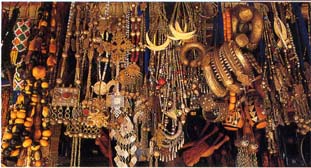 |
Eritrea, off the main tourist circuit, boasts pristine beauty, ancient civilizations and modern amenities--- packaged with a climate to your taste.Eritrea offers the latest and most distinctive destination for the discerning tourist. The youngest nation on the continent of Africa, with a history as old as humanity, it is a land of dramatic contrasts, rich traditions plus warm and welcoming people |
|
|
|
|
|
|
|
On the plains and hillsides you can visit picturesque
villages and browse in the colourful bazaars. Or visit some of
Eritrea’s famous mosques, medieval monasteries and orthodox churches.
Perched on a plateau in the highlands lies Asmara, Eritrea’s capital, which provides a relaxed and safe environment for exploring, shopping or simply sipping espresso at street cafés. Surrounding it are breathtaking views of towering mountains and dramatic ravines where tiny villages nestle in the folds.Fossil evidence reveals that the Rift Valley, which cleaves through Africa from the Red Sea, was the crucible of humanity. Early indigenous groups have lived in the Red Sea region since time immemorial. Over the millennia other races migrated by Sea and land and intermingled with the original inhabitants. Today there are nine ethnic groups whose history is rooted in a rich and ancient past.
|
|
|
|
However, regardless of ethnic origin, the people are harmoniously united in their newly independent State of Eritrea. After a hundred years of colonization and thirty years of war, the people have a pride in their achievements of the past and drive and determination to build a state worthy of the future. A future that includes extending a smiling welcome to visitors. Eritrean hospitality is legendary and must be experienced to be believed |
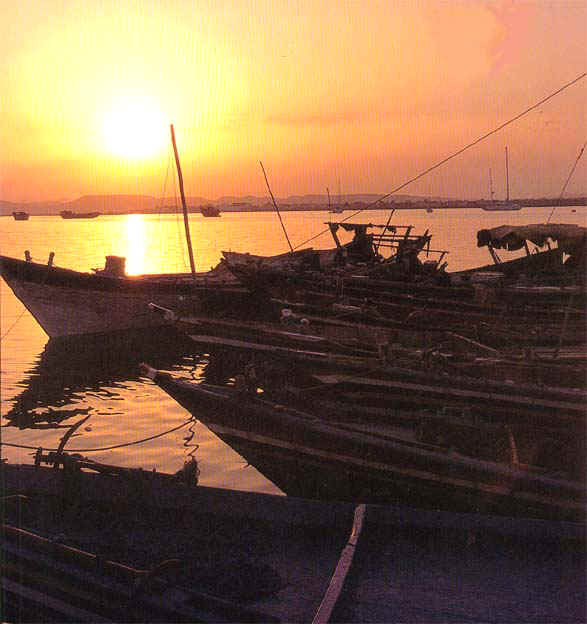 Scattered
like a string of pearls upon the azure, translucent waters of the Red Sea, more
than 350 Eritrean islands remain one of the last great-unspoiled destinations in
the world.
Scattered
like a string of pearls upon the azure, translucent waters of the Red Sea, more
than 350 Eritrean islands remain one of the last great-unspoiled destinations in
the world.
More than 200 of Eritrea’s islands belong to the Dahlak archipelago which forms the natural gateway to the modern port of Massawa and the ancient one of Adulis.
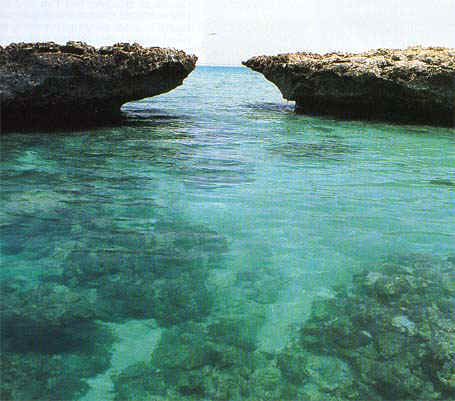 Few
regions in the world offer a greater opportunity for yacht cruising. In waters
that are generally tranquil, and never too far from the Arabian and African
mainlands, the Red Sea is an undisturbed marine paradise. Indeed, to cruise
through the Eritrean islands is to lose oneself in the peace and serenity of a
little-known and rarely visited world.
Few
regions in the world offer a greater opportunity for yacht cruising. In waters
that are generally tranquil, and never too far from the Arabian and African
mainlands, the Red Sea is an undisturbed marine paradise. Indeed, to cruise
through the Eritrean islands is to lose oneself in the peace and serenity of a
little-known and rarely visited world.
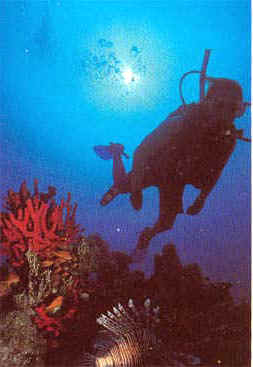 The
Dahlaks rise above a shallow continental shelf lying off the coast. Unless one
is blessed with an unlimited amount of time it is hardly a practicable
proposition to explore all the 200-plus islands, but even a short period will
provide a wonderful and unique adventure, Charter yachts are available for hire
in Massawa and provide not only facilities for cruising but also for scuba
diving and other watersports.
The
Dahlaks rise above a shallow continental shelf lying off the coast. Unless one
is blessed with an unlimited amount of time it is hardly a practicable
proposition to explore all the 200-plus islands, but even a short period will
provide a wonderful and unique adventure, Charter yachts are available for hire
in Massawa and provide not only facilities for cruising but also for scuba
diving and other watersports.
Pearl fishing has flourished around the Dahlaks since the time of the ancient Egyptians, who held influence over the islands. Later they fell under the control of the Ottoman Empire, when the largest island, Dahlak Kebir, was the chief port for pearl fishing in the southern part of the Red Sea.
 Many
islands are simply flat, sandy bars or barren rocks which jut out the sea. The
Dahlaks are true desert islands, with almost barren soils. Fresh water is scarce
and today only about four islands are inhabited, with a total population of just
2,500. Some have a sparse covering of acacia and others have shores lined with
mangrove trees of salt-bush, but there is little more vegetation than this. The
rockier islands rise out of the sea like mountains, which have been dwarfed, by
some catastrophic flood and, indeed, they are geologically the same as the
mainland desert from which they have been isolated. In the glare of the noonday
sun the appear dusty brown, but in the half light of dawn their hues range into
black. Some islands sparkle from the gypsum and quartzite crystal in their
rocks.
Many
islands are simply flat, sandy bars or barren rocks which jut out the sea. The
Dahlaks are true desert islands, with almost barren soils. Fresh water is scarce
and today only about four islands are inhabited, with a total population of just
2,500. Some have a sparse covering of acacia and others have shores lined with
mangrove trees of salt-bush, but there is little more vegetation than this. The
rockier islands rise out of the sea like mountains, which have been dwarfed, by
some catastrophic flood and, indeed, they are geologically the same as the
mainland desert from which they have been isolated. In the glare of the noonday
sun the appear dusty brown, but in the half light of dawn their hues range into
black. Some islands sparkle from the gypsum and quartzite crystal in their
rocks.
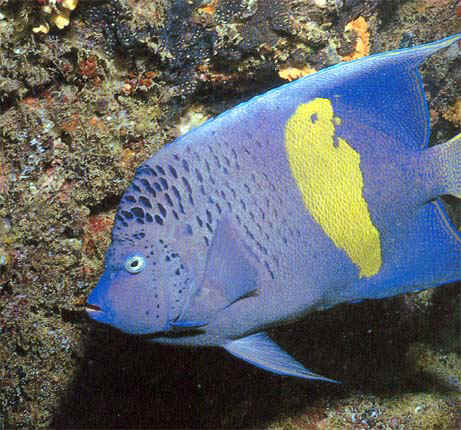 If
the islands themselves are inhospitable, around them, in the beautiful waters of
the Red Sea, it is another story. Coral reefs take a minimum of 7,000 years to
build up their superstructure and living corals are extremely vulnerable to
human damage and take many years to mend, growing back at the rate of as little
as ten millimeter a year. A welcome side-effect of the years of conflict in
Eritrea and the isolation of the Dahlaks from a tourist industry is that marine
life has been able to flourish undisturbed.
If
the islands themselves are inhospitable, around them, in the beautiful waters of
the Red Sea, it is another story. Coral reefs take a minimum of 7,000 years to
build up their superstructure and living corals are extremely vulnerable to
human damage and take many years to mend, growing back at the rate of as little
as ten millimeter a year. A welcome side-effect of the years of conflict in
Eritrea and the isolation of the Dahlaks from a tourist industry is that marine
life has been able to flourish undisturbed.
 Of
the 1,000-plus species or sub-species of fish known to inhabit the Red Sea, some
15 per cent are not found anywhere else. Some corals and echinoderms, such as
certain star fish, are also only found here.
Of
the 1,000-plus species or sub-species of fish known to inhabit the Red Sea, some
15 per cent are not found anywhere else. Some corals and echinoderms, such as
certain star fish, are also only found here.
Much of Eritrea’s 1,200-kilometere-mainland coast, let alone the hundreds of kilometers of island coasts, is virtually deserted. Many of the Dahlak reefs have not been visited by divers since the 1960s, if indeed at all.
The Dahlaks are indeed a world of their own.
Bright and colorful, cheerful and extrovert, a mixture of faiths and contrasting cultures, the people of Eritrea find harmony and unity in their very diversity.
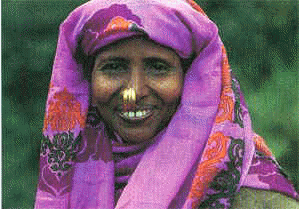
|
The smiling faces of Eritrea offer a warm welcome to friends and strangers alike. |

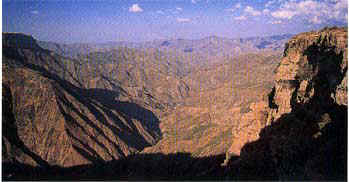
|
The dramatic Gareda Valley lies to the south of Kohaito |
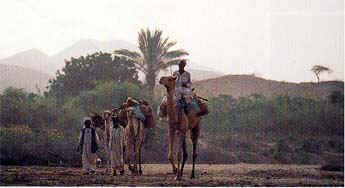
|
Camels crossing the dry bed of Anseba River |
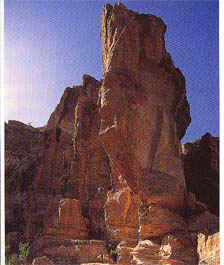
|
Volcanic rock sculpted into dramatic forms stand sentinel to Gargardi Valley |
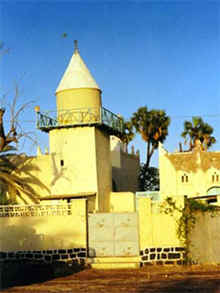 |
The oldest Mosque in Massawa
and in the region.
Visafric Photo |
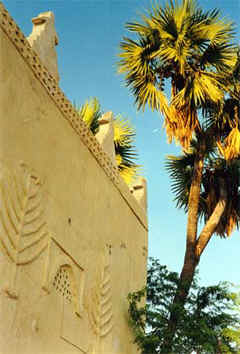 |
The oldest Mosque in the
region from a different angle.
Visafric Photo |
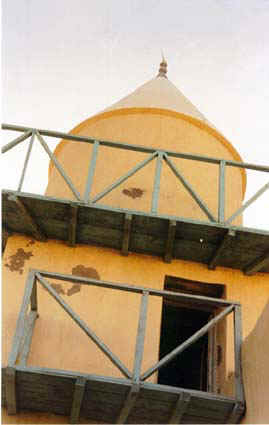 |
Can You name the Mosque? |
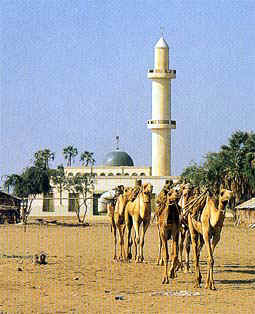 |
Ages-old camel train ambles past Hirgigo's distinctive minaret |
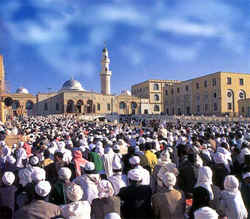 |
Thousands of devoted Muslims mark the Idd celebrations at an Asmara Mosque. |